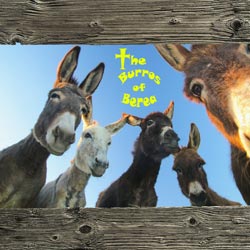Revelation 20 and the New Exodus (Part 1): The Dragon
© Robert E. Cruickshank Jr (June 9, 2022)
Revised October 9, 2022
“Then I saw an angel coming down from heaven, holding the key of the abyss and a great chain [a]in his hand. And he took hold of the dragon, the serpent of old, who is the devil and Satan, and bound him for a thousand years” (Revelation 20:2).
The word “dragon” is used 13 times in the New Testament, with all the usages occurring exclusively, by John, in the book of Revelation. By the time we get to chapter 20, John has already introduced the dragon imagery back in Chapter 12 and used it extensively.
As G.K Beale says: Revelation 12 is a “replay of the Exodus pattern.” David S. Gifford puts it this way: “Revelation 12 is primarily understood through the exodus motif.” So, John introduces the dragon in a context that is clearly embedded with Exodus imagery.
In Revelation 12:9, Johns calls Satan “the great dragon” – using precisely the same title that is given to the Egyptian Pharaoh in the Septuagint version of Ezekiel 29:3. Earlier, in Revelation 12:3, John “colors” his language by adding that Satan is “the great RED dragon.” Egyptologists, such as Robert K. Ritner and Geraldine Pinch, have long noted the significance of the color red in Egyptian culture and mythology.
Pinch writes: “The color red was associated with chaos and evil. Doing ‘red things’ meant to do evil” and “the names and images of chaotic forces such as Seth or Apophis are often drawn in red, while the rest of the text is in black.” Seth and Apophis are both represented variously as a snake, a crocodile and a dragon.
Ritner notes that there is even ancient Egyptian artwork showing red snakes and serpents (symbols of chaos and evil) being pierced with black knives. Considering the negative connotations of the color “red” in the Egyptian mindset, it is ironically quite fitting then that Pharaoh and his armies should drown in a place called “the Red Sea.”
Putting all of this together, Stephen Hre Koi notes how obvious the connection would have been to John’s original audience. He writes:
“When John introduced the appearance of the Dragon in heaven, he significantly added the word ‘red’-it is the ‘great red Dragon.’ Because of the long tradition in the Jewish community, readers would immediately understand God’s impending overthrow of the Dragon as soon as John mentions the great red Dragon. This is a subtle way of using a symbol but clear enough for sensitive readers or listeners to understand. John is presenting images and symbols creating an ‘Exodus’ environment for the Asian Christians, similar to the time of Moses.”
This being said, its rather obvious that John would expect his readers to import the information about “the dragon,” from Revelation 12 where he first introduces the imagery, into his final usage of the term in Revelation 20. He’s not rebooting the imagery everytime he mentions it.
Consequently, when John uses the word “dragon” to describe Satan in chapter 20, he’s expecting lights to go off in his readers’ heads – lights that will illuminate the fact that he has a New Exodus in mind. He does this by drawing their thoughts back to Egypt, back to Pharoah and back to the First Exodus.
To be continued in next post…



